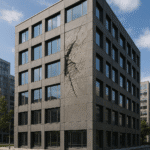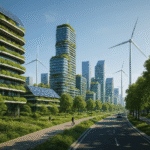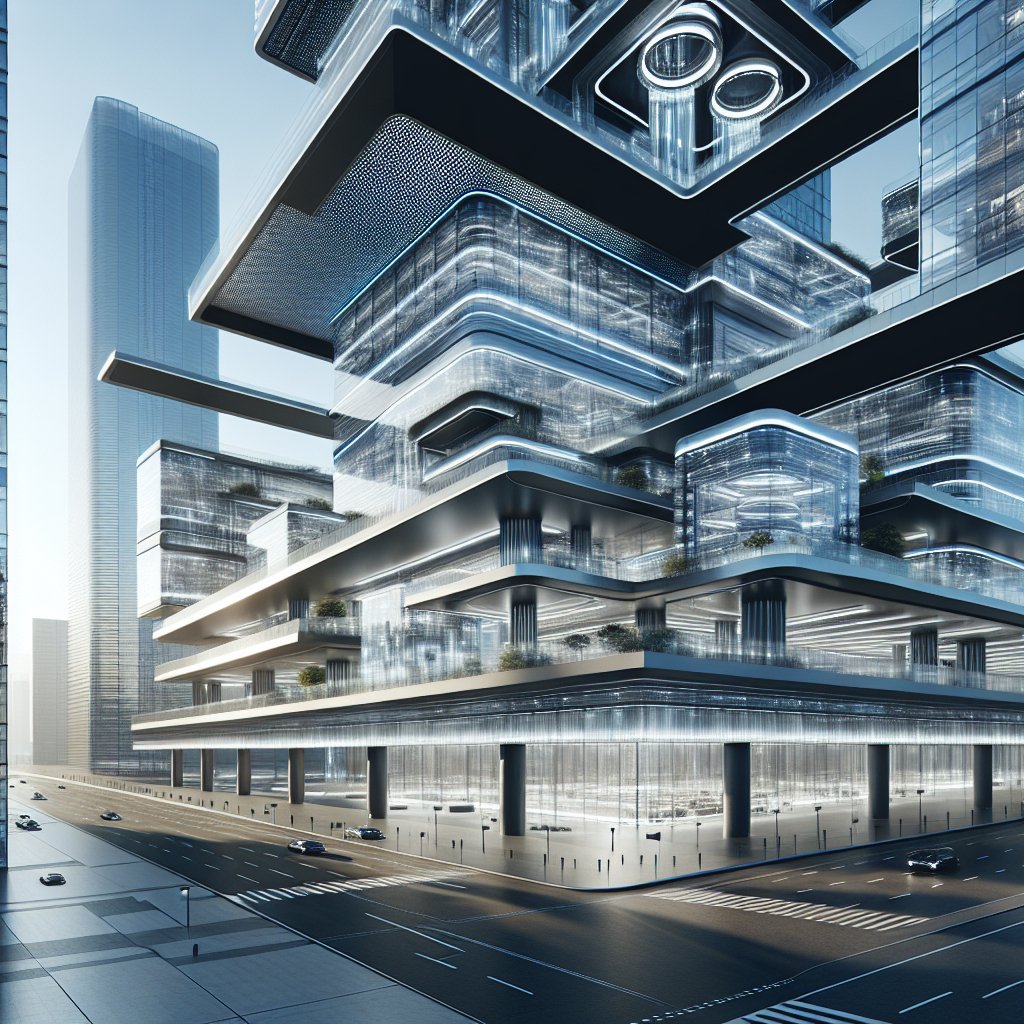Net Zero Architecture represents a groundbreaking approach in the field of futuristic architecture, aiming to achieve carbon neutrality by balancing the amount of greenhouse gases emitted with the amount removed from the atmosphere. This innovative architectural philosophy is not just a trend but a necessary evolution in response to the pressing challenges of climate change and environmental sustainability. By integrating advanced technologies, sustainable materials, and innovative design principles, net zero buildings are setting new standards for energy efficiency and ecological responsibility.
The Principles of Net Zero Architecture
At the core of net zero architecture is the principle of energy efficiency. This involves designing buildings that consume as little energy as possible while maximizing the use of renewable energy sources. Architects and engineers work collaboratively to create structures that are not only aesthetically pleasing but also functionally efficient. This often includes the use of high-performance insulation, energy-efficient windows, and state-of-the-art heating, ventilation, and air conditioning (HVAC) systems.
Another fundamental principle is the integration of renewable energy technologies. Solar panels, wind turbines, and geothermal systems are commonly employed to generate clean energy on-site. These technologies help reduce reliance on fossil fuels and minimize the carbon footprint of the building. Additionally, net zero buildings often incorporate energy storage solutions, such as batteries, to ensure a steady supply of power even when renewable sources are not actively generating energy.
Water conservation is also a critical aspect of net zero architecture. Innovative water management systems, such as rainwater harvesting and greywater recycling, are implemented to reduce water consumption and promote sustainable usage. These systems not only conserve water but also reduce the energy required for water heating and treatment.
Innovative Design and Materials
Net zero architecture is characterized by its use of cutting-edge design and materials that contribute to the overall sustainability of the building. Architects are increasingly turning to biophilic design principles, which emphasize the connection between humans and nature. This approach often includes the incorporation of natural light, green spaces, and natural materials, creating environments that are both sustainable and conducive to well-being.
Advanced building materials play a crucial role in achieving net zero status. Materials such as cross-laminated timber (CLT), recycled steel, and low-carbon concrete are becoming more prevalent in construction. These materials not only reduce the carbon footprint of the building process but also enhance the building’s energy efficiency and durability.
Furthermore, smart building technologies are integral to net zero architecture. These technologies enable real-time monitoring and optimization of energy usage, allowing for more efficient management of resources. Smart thermostats, lighting systems, and energy management software are just a few examples of how technology is being leveraged to achieve net zero goals.
Challenges and Opportunities
While the benefits of net zero architecture are clear, there are also significant challenges to its widespread adoption. One of the primary obstacles is the initial cost of implementing net zero technologies and materials. Although these investments often lead to long-term savings, the upfront costs can be prohibitive for some developers and property owners.
Regulatory and policy frameworks also play a crucial role in the adoption of net zero architecture. Governments and municipalities must create supportive policies and incentives to encourage the development of net zero buildings. This includes offering tax credits, grants, and other financial incentives to offset the initial costs and promote sustainable building practices.
Despite these challenges, the opportunities presented by net zero architecture are immense. As awareness of climate change and environmental issues continues to grow, there is increasing demand for sustainable building solutions. Net zero architecture not only addresses these concerns but also offers a competitive advantage in the real estate market, as more consumers and businesses seek environmentally responsible options.
The Future of Net Zero Architecture
The future of net zero architecture is promising, with advancements in technology and materials paving the way for even more innovative and sustainable building solutions. As the industry continues to evolve, we can expect to see greater integration of artificial intelligence and machine learning in building management systems, further enhancing energy efficiency and resource optimization.
Moreover, the concept of net zero is expanding beyond individual buildings to encompass entire communities and cities. Urban planners and architects are working together to create net zero neighborhoods, where energy, water, and waste systems are interconnected and optimized for sustainability. This holistic approach has the potential to transform urban environments and significantly reduce their environmental impact.
In conclusion, net zero architecture is a vital component of the broader movement towards a more sustainable and resilient future. By embracing innovative design, materials, and technologies, architects and developers are not only reducing the carbon footprint of buildings but also setting new standards for environmental responsibility. As the world continues to grapple with the challenges of climate change, net zero architecture offers a viable and inspiring path forward.










